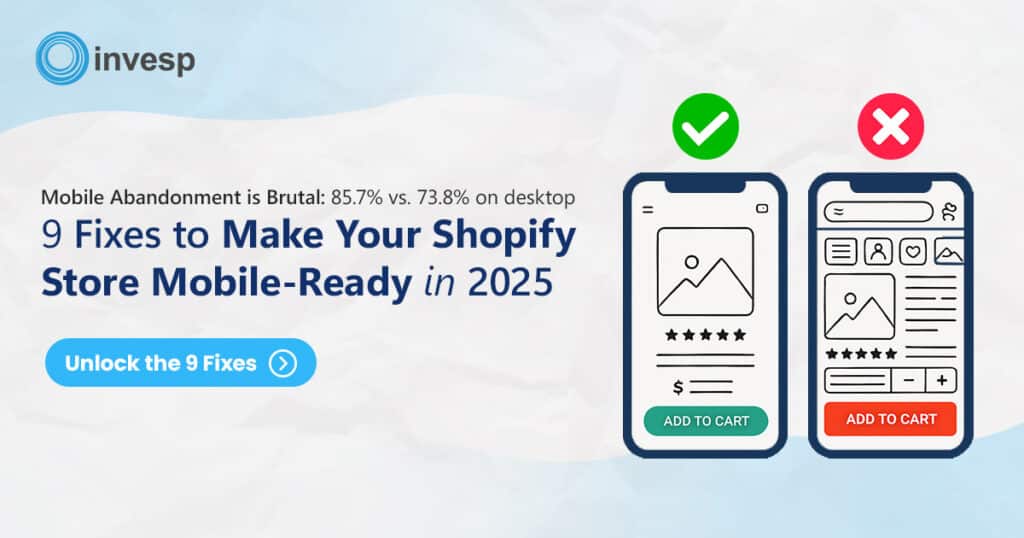Let’s say you’ve got a fantastic product or service, but you need help to get the word out. You’re not alone. Many businesses are in the same boat, trying to cut through the noise and grab their audience’s attention. That’s where killer ad copy comes in.
It’s not just about telling people what you offer. It’s also about crafting a message that resonates, persuades, and ultimately converts.
From understanding your audience to using “power words” that pack a punch, we’ll discuss all the tips and best practices for writing a winning ad copy.
1. Understand Your Audience:
The first step in creating your ad copy is to know who you’re targeting and what they’re looking for.
This helps you address your audience directly in the copy, tailor your message to their preferences, and create content that resonates with them.
Why is it so crucial?
Because people are more likely to respond to messages that resonate with their needs, desires, and pain points. It’s like telling a fisherman you’ve got the best worm when he’s looking for a lure. You need to know what bait to use.
Take Nike’s ads, for example.

They don’t just sell shoes—they sell a lifestyle. Their ads often tap into their audience’s aspirations and emotions, whether it’s the joy of running or the thrill of competition.
How do you go about understanding your target audience? Here are some tips:
- Start with demographics and psychographics. Dive into demographic data, but continue. Look into psychographics—what are their values, interests, and lifestyles? Tools like Google Analytics, social media insights, and customer surveys can be your best friends here.
- Look at your current customers. Your existing customers can provide insights into your target audience. Analyze their purchase history, customer feedback, and engagement patterns to understand who they are and what they like about your products or services.
- Create customer personas. Compile your research into customer personas—detailed profiles of your ideal customers. Personas should include demographic and psychographic information and outline pain points, challenges, and how your product or service fits into their lives.
- Stay abreast of industry trends. Stay up to date with industry trends and research that might affect your audience’s preferences and behaviors. This can help you anticipate changes and adapt your messaging accordingly.
- Use A/B testing. Test different versions of your ad copy with segments of your audience to see what resonates best. Use the insights from these tests to refine your messaging.
Remember, empathize with Your Audience. Put yourself in your audience’s shoes and understand their emotions, challenges, and desires. This empathy will help you create more authentic and relatable ad copy.
2. Craft a Strong Headline
Statistics suggest that while 8 out of 10 people read headline copy, only 2 out of 10 visitors will read the rest.
This shows how important it is to create a strong headline for your ad copy. Your headline should grab attention and make a promise or offer that compels the reader to keep reading.
A strong headline doesn’t mean getting carried away and making it two-sentence long. The headline should be long enough to cover the essentials but short enough to keep things interesting.
A good rule of thumb is to keep your headline to a maximum of 30 characters to ensure it’s easily digestible at a glance.
At the same time, make sure your headline makes a strong and decisive statement. For example, Dollar Shave Club’s famous headline, “Shave Time. Shave Money,” promises convenience and savings.

Using numbers or statistics can also help you add credibility to your ad copy. For example, a headline like “Join 1 Million Satisfied Customers” instantly adds credibility and appeal.
That’s not all. Here are some more quick tips to help you craft a strong headline for your ad copy:
- Ask a Question: Questions are the spark of curiosity. For example, headlines like “Tired of Overpaying for Your Phone Bill?” directly address a common pain point, encouraging readers to seek a solution.
- Incorporate Emotional Triggers: Emotions drive action. Use emotional triggers that align with your brand and audience. For example, a headline like “Transform Your Home into a Sanctuary of Comfort” appeals to the desire for a peaceful living space.
- Urgency: Creating a sense of urgency can prompt immediate action. For example, use phrases like “Limited Time Offer” or “Act Now” to encourage your target audience to take immediate action.
- Highlight what sets you apart: If your product is the first of its kind, mention that in the headline.
3. Highlight Benefits, Not Just Features
When writing ad copy, it’s easy to fall into the trap of listing all the cool features of your product or service.
Your audience doesn’t want a tech manual or to hear how great your product is—they want to know what’s in it for them.
Features are the characteristics of your product or service, like a 10-hour battery life in a laptop or organic ingredients in skincare.
However, benefits are the outcomes or advantages of those features, like uninterrupted work or healthier, glowing skin.
4. Use Clear and Concise Language
Avoiding jargon and keeping your copy straightforward will help you communicate your message more effectively. Your target audience will be able to understand your message more efficiently, reducing the likelihood of confusion or misinterpretation.
You can take inspiration from Apple’s ad copies—known for their minimalist, short, impactful sentences.

Check out how Apple’s headline is short and sweet. It still gets the main point across and grabs your attention with solid, snappy sentences.
Want to write a clear and concise ad copy that effectively communicates your message like Apple? Here are some tips:
- Focus on Key Benefits: Highlight the most important benefits of your product or service. For example, a skincare brand might emphasize “Instant Hydration” rather than listing all the ingredients.
- Use Simple Language: Avoid jargon or complex vocabulary. For instance, instead of saying, “Our product is an amalgamation of various nutrients,” you could say, “Our product is packed with essential nutrients.”
- Be Specific: Vague statements won’t resonate with your audience. Instead of saying, “Our software improves productivity,” specify, “Our software cuts your workload by 50%.”
5. Include a Clear Call to Action (CTA)
A Call to Action (CTA) is essential to your ad copy.
It’s the part of your message that tells your audience exactly what you want them to do next—whether clicking a link, signing up for a newsletter, or purchasing.
Again, you might want to emulate Apple’s approach to CTAs in their ad and website copy.
They use specific, visible, and customer-oriented CTAs that guide readers to learn more about the product with clear links and small arrows in a standout color.

Notice how Apple also uses action-oriented language that leaves no room for ambiguity. Instead of just saying, “Learn more, the CTA says, “Learn more about the design of iPhone 5.”
This tells your audience precisely what action you want them to take and what they can expect when they click on the CTA.
You can also create a sense of urgency using phrases like “Limited time offer” or “Act now.” They’ll help you encourage your audience to take immediate action.
Here are some more best practices for creating a winning CTA for your ad copy:
- Keep it Short and Sweet: Your CTA should be concise and easily understood. Avoid long phrases that might confuse your audience.
- Make it Stand Out: Use design elements like contrasting colors, bold text, or buttons to make your CTA pop. You want it to be the most noticeable part of your ad.
- Align with Your Goal: Ensure your CTA aligns with your ad’s goal. If you’re promoting a new product, your CTA might be “Buy now.” If you want to generate leads, it might be “Download our guide.”
- Test Different CTAs: Experiment with different CTAs to see what works best for your audience. A/B testing can help you determine which CTA leads to higher conversion rates.
6. Use Power Words
The choice of words can drastically affect how your audience will react to the ad copy.
Power words are specific words or phrases that trigger an emotional or psychological response, making them incredibly useful in advertising. They can create a sense of urgency, evoke curiosity, or offer exclusivity, prompting the reader to take action.
Here are some examples of “power words” in an ad copy:
- Urgency: “Hurry,” “Instant,” “Now,” “Limited-time offer”
- Curiosity: “Secret,” “Unveiled,” “Exclusive,” “Behind the scenes”
- Value: “Free,” “Save,” “Discount,” “Bonus”
- Trust: “Proven,” “Guaranteed,” “Endorsed,” “No-risk”
- Emotion: “Amazing,” “Discover,” “Unlock,” “Empower”
Aside from invoking urgency, action-oriented power words like “discover” or “unlock” can also prompt users to take the next step.
However, we suggest using power words sparingly—overuse might make your ad copy feel spammy or insincere.
And don’t just use them for no rhyme or reason. Your power words should align with your brand’s tone and personality. At the same time, they should be relevant to your product, service, or offer.
For example, consider this ad copy by Indeed, a popular job search platform.
In one of their Facebook ads targeting recent college graduates, they use words like “Opportunity,” “Presents,” and “Congratulates” to evoke a sense of excitement and achievement.

They don’t overdo the usage; the words also directly align with their platform and offerings.
7. Test and Optimize
Once you’ve crafted your ad copy, the work doesn’t stop there.
You must continually test and optimize your ad copy to ensure it performs as intended.
The most common testing, also called A/B testing, involves creating two versions of your ad (A and B) with one varying element, such as the headline or CTA.
By showing these ads to similar audiences, you can see which version performs better and use that insight to improve your copy.
For example, let’s say you’re running ads for a fitness app. You could test two different headlines:
- Version A: “Get Fit in Just 10 Minutes a Day”
- Version B: “Transform Your Body with Our Quick Workouts”
If Version B has a higher click-through rate, you’ll know that focusing on “transformation” and “quick workouts” resonates more with your audience.
The best part? You can use modern-day tools to make this process a breeze for you.
For example, you can use FigPii—a powerful conversion optimization tool to improve your ad copy and website experience.
FigPii offers features like heatmaps, session recordings, and A/B testing to understand how users engage with your ads and landing pages. Analyzing this data lets you make informed decisions to refine your ad copy and improve conversion rates.
Then, you have Google Analytics to see how users interact with your ads. Look at metrics like click-through, conversion, and bounce rates to determine how well your copy performs.
The trends and customer expectations are constantly evolving, so don’t just stop after one test. Regularly review and update your ad copy. Keep an eye on the latest trends and best practices, and experiment with new approaches.
Wrapping It Up with Winning Ad Copy!
Crafting a compelling ad copy involves striking a balance between being informative and persuasive. Following these tips can create ad copy that captures attention and drives action.
Remember, the key is to keep testing and refining your message. Stay in tune with your audience, keep an eye on the trends, and don’t be afraid to shake things up. So, give these strategies a shot, and watch your ads come to life!



